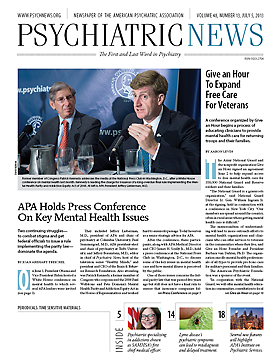Patients are responsible for nearly one-quarter of medical bills, according to the AMA’s sixth annual National Health Insurer Report Card.
This year the report card examined the portion of health care expenses for which patients are responsible through copays, deductibles, and coinsurance. During February and March, patients paid an average 23.6 percent of the amount that insurers set for paying physicians.
“Physicians want to provide patients with their individual out-of-pocket costs, but must work through a maze of complex insurer rules to find useful information,” said AMA Board Member Barbara McAneny, M.D. “The AMA is calling on insurers to provide physicians with better tools that can automatically determine a patient’s payment responsibility prior to treatment.”
The National Health Insurer Report Card is the cornerstone of the AMA’s Heal the Claims Process campaign. The goal of the campaign is to eliminate administrative waste by improving the billing and payment system.
The AMA also unveiled a new Administrative Burden Index (ABI) to rank commercial health insurers according to the level of unnecessary cost they contribute to the billing and payment of medical claims. The AMA found that administrative tasks associated with avoidable errors, inefficiency, and waste in the medical-claims process resulted in an average ABI cost per claim of $2.36 for physicians and insurers. Cigna had the best ABI cost per claim of $1.25, or 47 percent below the commercial insurer average. HCSC had the worst ABI cost per claim at $3.32, or 41 percent above the commercial insurer average.
The AMA estimates that $12 billion a year could be saved if insurers eliminated unnecessary administrative tasks with automated systems for processing and paying medical claims. This savings represent 21 percent of total administrative costs that physicians spend to ensure accurate payments from insurers.
“The high administrative costs associated with the burdens of processing medical claims annually should not be accepted as the price of doing business with health insurers,” said McAneny. “The AMA is a strong advocate of an automated approach for processing medical claims that will save precious health care dollars and free physicians from needless administrative tasks that take time away from patient care.”
In other AMA news released at the opening of the AMA’s Annual House of Delegates meeting last month, the organization announced the names of the 11 medical schools that will receive funding as part of its Accelerating Change in Medical Education initiative.
Outgoing AMA President Jeremy Lazarus, M.D., said the initiative is aimed at transforming the way future physicians are trained—one of the three goals of the AMA’s long-term strategic plan.
“We are thrilled to award funding to 11 medical schools for their bold, transformative proposals designed to close the gaps between how medical students are trained and how health care is delivered,” Lazarus said in a statement.
The proposals include models for competency-based student progression, total student immersion within the health care system from the first day of medical school, and the increased use of health IT and virtual patients.
The schools are Indiana University School of Medicine; Mayo Medical School; New York University School of Medicine; Oregon Health and Science University School of Medicine; Pennsylvania State College of Medicine; Brody School of Medicine at East Carolina University; Warren Alpert Medical School of Brown University; University of California, Davis, School of Medicine; University of California, San Francisco, School of Medicine; University of Michigan Medical School; and Vanderbilt University School of Medicine.
The AMA will provide $1 million to each school over five years to fund the educational innovations envisioned by each institution. A critical component of the initiative will be to establish a learning consortium with the selected schools to rapidly disseminate best practices to other medical and health-profession schools. ■
